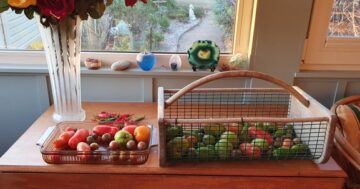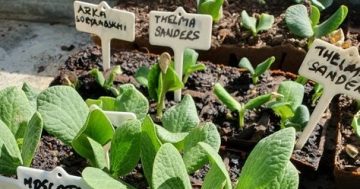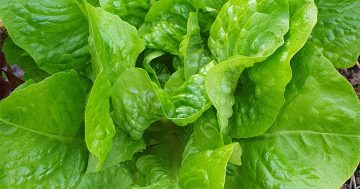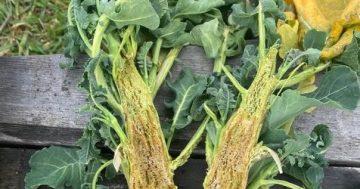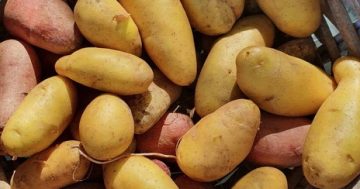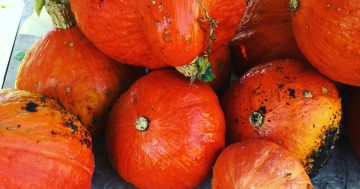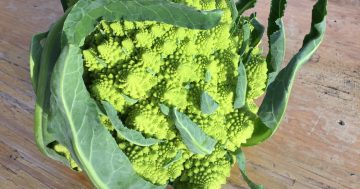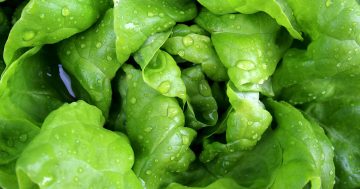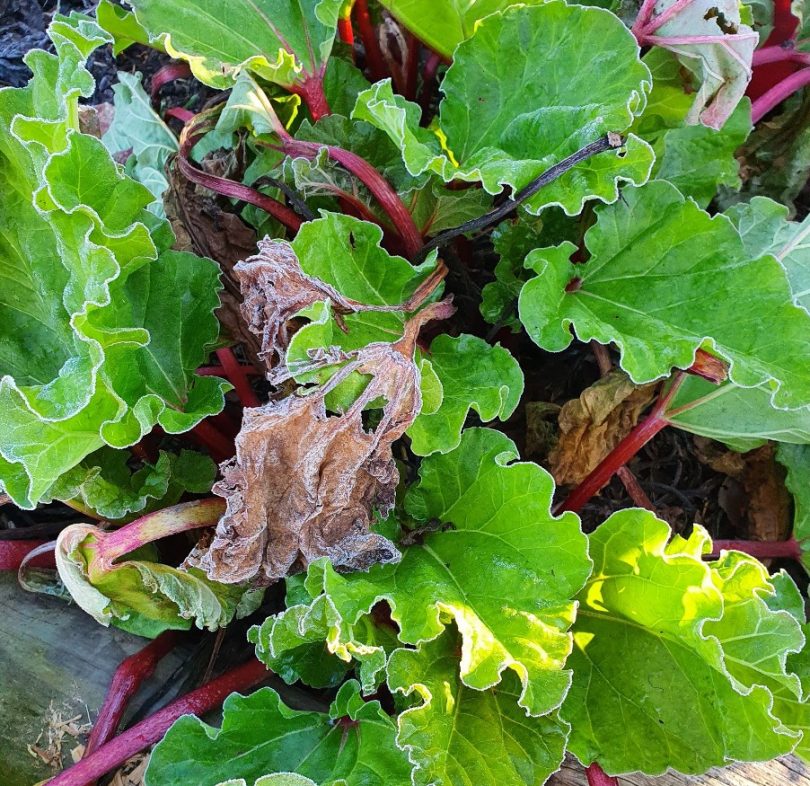
Take your gardening cue from rhubarb and slow down in early winter. Photo: Wynlen House.
Late May and early June have brought with it some very cold weather across the region. The frost season has well and truly begun. The harsh frosts tell the rhubarb it’s time to rest for the winter, and unless it is in a well-protected spot, it will begin to die back.
From rhubarb’s lead, it is now time to slow down on your planting, especially from seed.
Soil temperatures are falling and germination will be slow if it happens at all. It is not too late, perhaps, to plant some broad bean seeds if you have not already planted some.
Broad bean seed will take a good two to three weeks to germinate and will grow slowly through winter. They make a good green manure crop that can be cut down and turned in by late winter or early spring, or you can leave them to mature and harvest a crop in late November through December.
You can still plant some seedlings, especially from the brassica family, leeks and onions, lettuce and spinach, and Asian greens. It is best to grow them under cover to give them a bit of support.
While greens will grow during the frost, growth will be slow and the tender leaves of lettuce, spinach and other greens will get tough when exposed to continual frost.
Covering your vegetables not only helps to protect from frosts but will also help keep the soil warmer. This small temperature variation of around two degrees makes a surprisingly noticeable difference to growth and, most importantly, can keep your leafy greens tender.
There are a large number of materials that can be used to protect your garden. Old sheets, feed sacks, hessian, shade cloth, the list is endless. These materials are placed over plants at night and removed during the day.
Using these materials and this method will depend on the number of plants to be covered or the size of the garden and a commitment to regular removal as these materials do not allow sunlight penetration. Horticultural fabrics or shade cloth between 40 per cent and 60 per cent shade can remain on the bed, held in place by some sort of frame.
A hooped frame called a cloche can be homemade or purchased. Homemade frames are made with rebar and poly pipe with the fabric held in place with ‘specific to purpose’ clips.
You will also need to protect the heads of cauliflower and broccoli from the frost. This can be as simple as using a garden tie to gather the top large leaves together over the vegetable heads or using inverted plant pots.
Both are very effective at stopping frost burn most of the time. We have substituted broccolini or sprouting broccoli for broccoli as it grows more quickly and seems to cope better with continuous cold and frosts.
Autumn and winter planted onions often fail to bulb but tend to rush to seed in early spring as soon as the weather starts to warm.
We find that bulbing onions are better planted from late winter through to summer. Bulbing onions require a specific combination of daylight hours and temperature to bulb, and often the early heat we can get in spring upsets this delicate balance.
However, leeks can be planted now, and non-bulbing onions such as walking onions, if already established, will grow slowly through winter.
The other option is to take a brief break from planting and do the winter maintenance tasks in the kitchen garden. Fruit trees and bushes need pruning; partitioning and transplanting rhubarb, asparagus and globe artichokes; mulching to protect the soil and keeping the worms and micro-organisms warm and food supply through winter.
Another favourite winter activity is what we Wynlen women call “extreme weeding”. Get rugged and gloved up and out into the wildest part of the garden where weeds, unwanted grasses and woody dormant herbs such as mint and oregano have taken over.
Remember, do not leave your soil bare. Use your weeds and unwanted plants as mulch or for compost. Bare soil quickly becomes dead soil. Winter temps mean green manures are very slow to grow so mulching cleared sections is a must. A thick layer of decomposed animal manure or other organic material – hay, sugar cane mulch, straw, pea straw – all work well.
Keep water and fertiliser up to the vegetables you planted in autumn. Watering in winter does not usually require long soaking. Cold soils tend to hold water longer and a water with a handheld hose is usually sufficient.
Happy gardening and take time during winter to relax in the garden and keep warm.
Bronwyn Richards and Helen Lynch run Wynlen House Artisan Village Farm and Learning Centre, a small village organic market garden in Braidwood. Since 2006 they have grown and sold fresh vegetables, eggs, preserves and garlic, and teach others to do the same.












